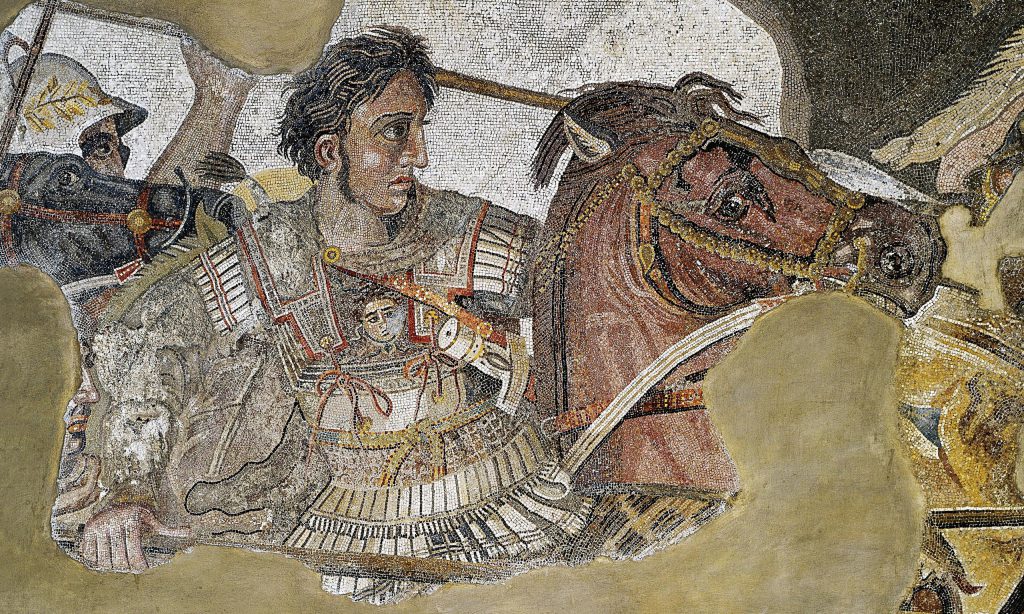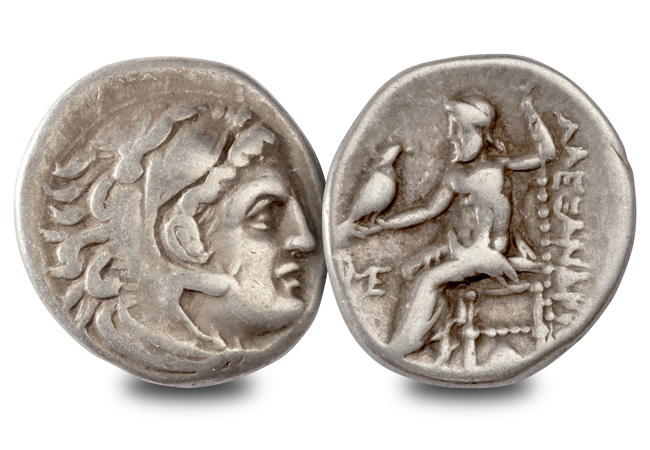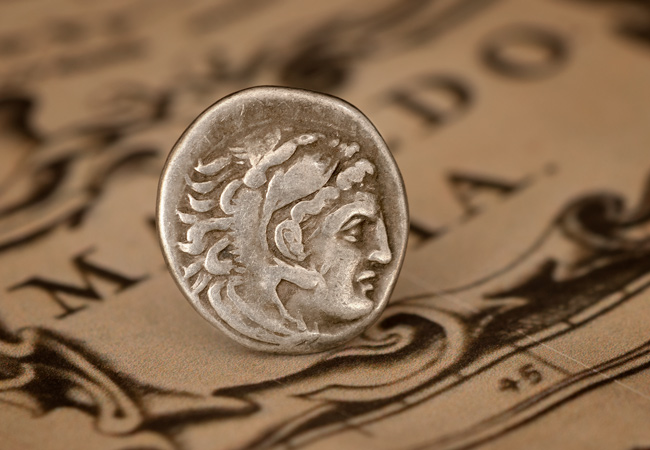“When Alexander saw the breadth of his domain, he wept for there were no more worlds to conquer.”
Undefeated in battle, Alexander the Great is one of history’s most successful military leaders.

Succeeding his father as king of the ancient Greek kingdom of Macedon at the tender age of 20, by the time he had reached his 30th birthday he had built an empire stretching from Greece to north-western India.
His coinage was key to the expansion of his empire, but can you ever hope to own an original coin from that period?
In short, yes you can, but before that let’s just paint the picture of Alexander’s incredible 13-year reign.
He became ruler of Macedonia following the murder of his father Philip II. He was just 20 years old, but wasted no time in broadening his horizons and expanding his empire.
After launching a massive military expedition against the Persian Empire, his armies marched all the way to Egypt and back, taking territory all the way to the borders of India.
His armies were undefeated in battle for his entire 13 reign.
The Coinage of Alexander the Great
As his empire grew, Alexander needed to strike coins to fuel the economy, but it was mainly used to pay soldiers, taxes and eventually protection money to the barbarians.
There were two main coin types – the Silver Drachm, weighing about 4.2g and the larger Silver Tetradrachm, weighing 17.2g.
The value of the coins came principally from what it was made of and Alexander coins were considered trustworthy as the person accepting the coin knew the coin was of a certain weight in silver.
During Alexander’s lifetime, there were about 26 mints producing his coinage, but after his death, Greek rulers and cities throughout the former Alexandrian Empire produced Alexander coinage at 52 mints at its peak.
Alexander coins were still being issued well over 200 years after his death, with around 91 different mints producing his coinage over a period of 250 years.
These are posthumous coins and, unsurprisingly, make up the bulk of the Alexander coins found today. The coins minted from 336 to 323 BC are referred to as “lifetime issues” and sell for eye-watering sums today.
The coin of the Gods
Alexander’s coins carried a portrait of Hercules on the obverse – although some argue that this is actually a portrait of Alexander himself – and Hercules’ father, Zeus on the reverse.

The reverse also features the text “ALEXANDROU”, which translates to “Of Alexander”. This is almost definitely referring to the coins being of Alexander, but he did claim to be related to both Hercules and Zeus, so perhaps it’s a nod to them both being of Alexander’s blood?
Owning Alexander the Great coins today
Even the posthumous coins are well over 2,000 years old, so they’re not all that common, but they are within reach for collectors.
Each coin was struck by hand, so size and even design differs from coin to coin, especially as they were struck at so many separate mints.
One thing is certain though, coins with such a rich history are the pinnacle for many collectors. Owning an Alexander the Great coin sounds like something that should be reserved for museums, but the joy of these coins is that you or I could become the custodian of one.
If you’re interested…
For the first time in my life, I have just seen an original Alexander the Great Silver Drachm in the flesh.

A friend of one of my most trusted dealers is selling his collection and I moved fast to secure them all for CPM clients.
3 thoughts on “Murder, battles and building an empire – The coins of Alexander the Great”